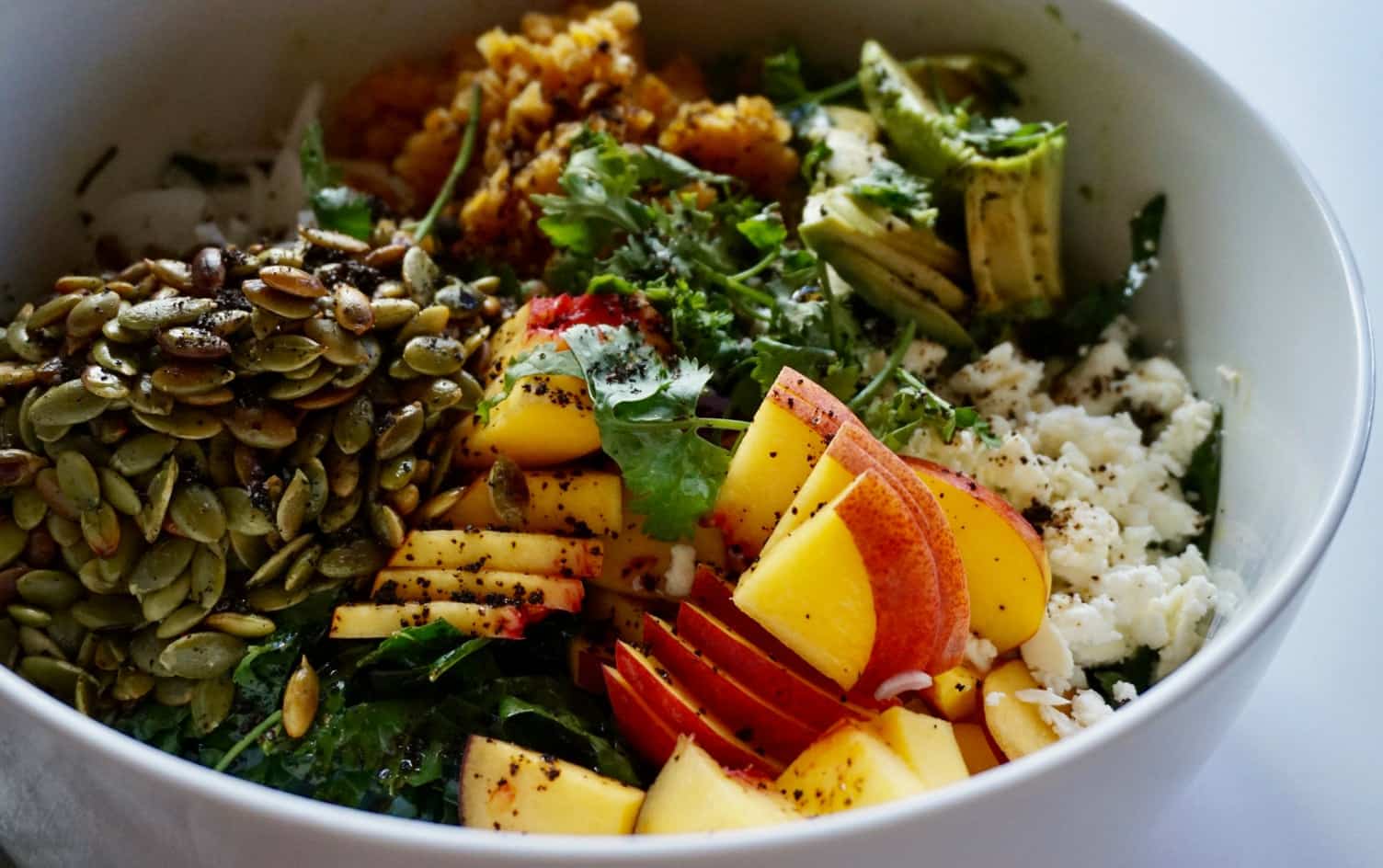Summer is the perfect opportunity to stick with salads at any time of day, and we aren’t talking about soggy, sullen greens. These seven salad strategies are surefire ways to make sure your vegetable-centric dishes are delicious, nutritious, worthy of mealtimes and wise for your wallet.
1. HEADS UP
Boxed greens may be convenient, but if you’ve ever had to toss the big leaves at the bottom because they wilt faster than you can eat them, you know that they aren’t always the best value. Often, buying greens by the bunch or the head is less expensive than buying boxes or bags of leaves (and then you can make your own salad mix!) Look for leaves that are perky and stiff, bright green and firm — not ones that are limp, loose or losing their luster around the edges. If you’re picking up boxes of lettuce, look for boxes that don’t have mushy bits in the bottom, and avoid ones with condensation on the inside of the box. (Leaves that sit in water wilt!)

2. LETTUCE TALK ABOUT GREENS
Not all greens are created equal in terms of their flavor profile, texture, ability to hold up to temperatures or different dressings. Kale, for instance, is a great, hearty base for salads with sturdy ingredients and stout dressings. Sturdy greens like kale, romaine, chard and collards do well with warm ingredients (Think: grilled corn and steak) while warmth will wilt more delicate greens like spring greens, spinach, bibb lettuce or herbs. Spring greens sog under steak, creamy toppings and robust veggies.
Reserve those sturdy greens for salads you want to travel well (e.g., to picnics) and those you are going to load up with grains and protein. Leave the lighter weight leaves for more delicate side salads.
3. DRESS APPROPRIATELY
Similar to the structure of your salad, different greens stand up better to different types of dressings. No one likes a wilted salad so considering the type of dressing is key to salad success. Sturdy, deep greens like kale, chard, tat soi, romaine and collards do well with creamy dressings with lots of acid, whereas lightweight greens such as spinach, spring greens, little gems and arugula like less heavy dressings — a little vinaigrette will do. You can dress sturdy greens well in advance of enjoying them, and even dressed salads with kale or chard will keep for a day in the fridge. Lightweight greens, on the other hand, want to be dressed just before enjoying them so don’t store these salads with dressings on them unless you want a wilt-fest.
4. ADD CRUNCH
The downfall of any flavorful salad is not-enough-crunch. Crunchy textures make mouths happy with intrigue, and adding crunchy ingredients is a great way to boost your bowl. Nuts, seeds, sesame sticks, crunchy carrots and homemade croutons are a great way to amp up your salad enjoyment factor.
If you have leftover bread, you basically have croutons. To make homemade croutons: Slice a few pieces of bread into small squares, then drizzle with olive oil and sprinkle with salt and pepper. Bake in a 350°F oven for 15 minutes or until the pieces of bread are golden brown and fragrant. Add additional spices, salt or pepper, if desired, then let cool and store in an airtight container for up to one month. Toss on salads (or soups or anywhere) at will.

5. DIY DRESSING
Bottled, store-bought dressings are a surefire way to derail even the healthiest salad. Packed with preservatives and ingredients your body can’t recognize as food (and your tongue can’t pronounce) these dressings add up to a big waste of money when you consider just how easy it is to make your own dressings at home. While the old-school vinaigrette ratio (1 part acid to 3 parts oil) applies, we suggest you use your tastebuds to drive your dressing creations.
Try mixing one part acid (lemon juice, grapefruit juice, orange juice, vinegar) to 3 parts oil (olive oil, coconut oil, etc.), and then add a little spoonful of something sweet or tart. Honey, maple syrup, apricot jam, Dijon mustard, Sriracha, shallots, yogurt or ricotta cheese are all great options.
6. STORE SMART
Salad success is dependent upon how you store your greens — before and after you’ve prepped your bowl. When you get home from the grocery store or the market with your greens, be sure to wash and dry them completely. To preserve and prolong freshness, wrap them loosely in a damp paper towel or place in a Ziploc bag with a dry paper towel (to absorb extra water). Then, keep them in the crisper drawer until ready to use. For composed salads, store them in the refrigerator until ready to eat. Sturdy salads can be dressed ahead of time, while salads with lighter leaves should be stored sans dressing.
READ MORE > THREE GREAT DINNER SALADS

7. LETTUCE MAKE IT A MEAL
Lettuce alone is a pretty boring base for a meal. But adding proteins like grilled steak or shrimp, rotisserie chicken or barbeque tofu make your greens great. Adding grains helps to give that salad some staying power — quinoa, rice or croutons add a complex carbohydrate boost that aids your digestion and boosts long-term energy levels. Sweet elements are an exciting contrast against bright, savory salads so adding a few berries, slices of citrus or dried cherries is a nice touch. And don’t forget to color your bowl with as many shades of healthy produce as you can: red tomatoes, orange carrots, yellow peppers, blueberries and purple cabbage are a good place to start.




